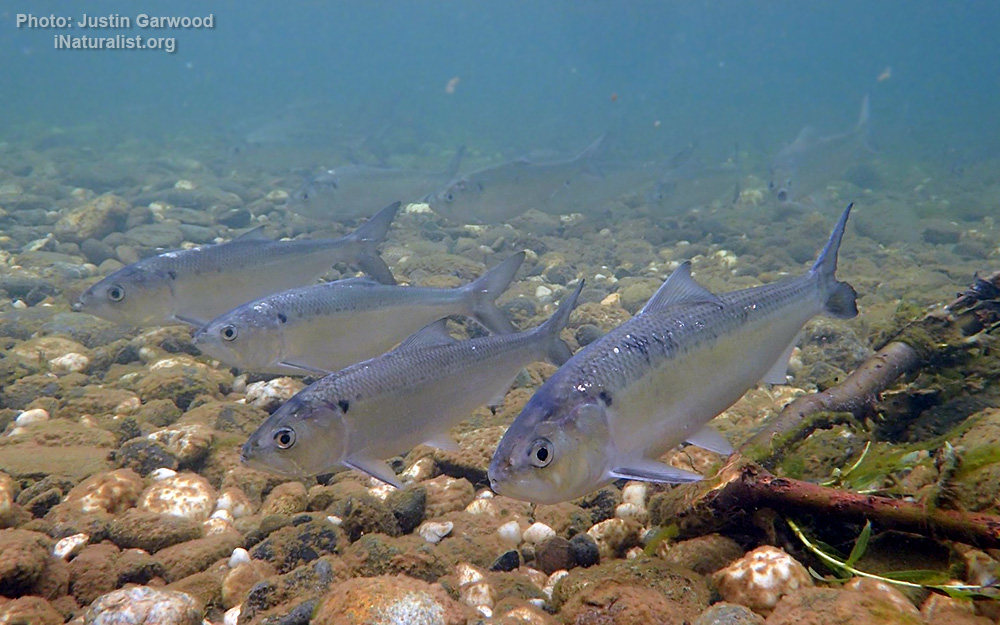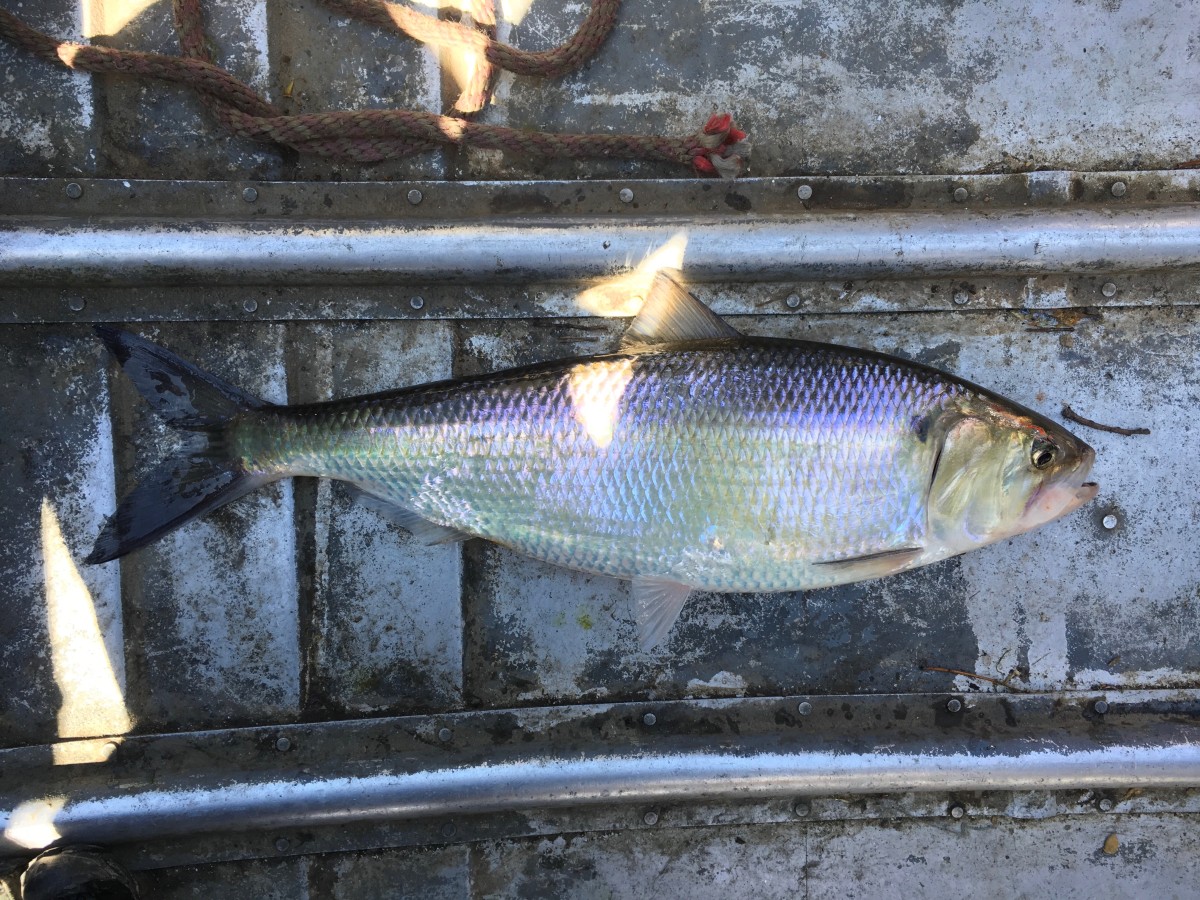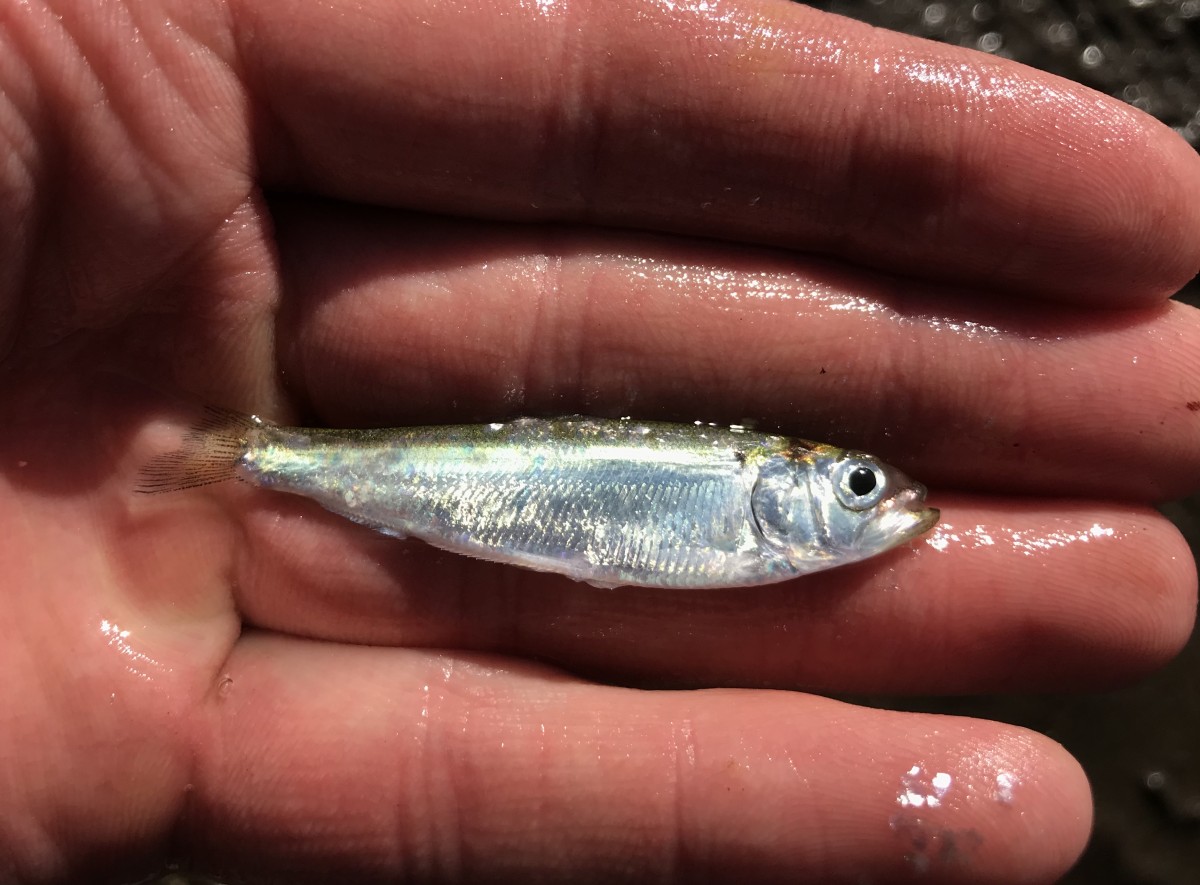American shad
(Alosa sapidissima)

Classification
General data
The American shad (Alosa sapidissima) is a species of anadromous clupeid fish naturally distributed on the North American coast of the North Atlantic, from Newfoundland to Florida, and as an introduced species on the North Pacific coast. The American shad is not closely related to the other North American shads. Rather, it seems to form a lineage that diverged from a common ancestor of the European taxa before these diversified.
Adult shad weigh between 1.5 and 3.5 kg (3 and 8 lb), and they have a delicate flavor when cooked. It is considered flavorful enough to not require sauces, herbs, or spices. It can be boiled, filleted and fried in butter, or baked. Traditionally, a little vinegar is sprinkled over it on the plate. In the Eastern United States, roe shads (females) are prized because the eggs are considered a delicacy.
The name shad derives from the Old English sceadd, meaning herring; it is a cognate to Irish, Welsh, and Scottish Gaelic words for herring.
Life
The shad spends most of its life in the Atlantic Ocean, but swims up freshwater rivers to spawn. Northern populations are iteroparous, thus they may survive breeding, return to the sea, and then return to fresh waters to spawn several more times. However, southern populations exhibit semelparity, similar to Pacific salmon. In the marine environment, shad are schooling fish. Thousands are often seen at the surface in spring, summer, and autumn. They are hard to find in the winter, as they tend to go deeper before spawning season in the range 13–18 °C (55–64 °F);[9] they have been pulled up in nets as deep as 120 metres (65 fathoms).
Like other herrings, the American shad is primarily a plankton feeder, but eats small shrimp and fish eggs. Occasionally they eat small fish, but these are only a minor item in their general diet.
The sexually mature American shad enter coastal rivers in spring or early summer, usually when the river water has warmed to 10 to 13 °C (50 to 55 °F). Cooler water appears to interrupt the spawn. Consequently, the shad run correspondingly later in the year passing from south to north along the coast, commencing in Georgia in January; in March in the waters tributary to Pamlico and Albemarle Sounds; in April in the Potomac; and in May and June in northern streams generally from Delaware to Canada.
In large rivers, such as the Connecticut, American shad run far upstream. The apparent longest distance is in the St. Johns River of Florida, an extremely slow (drops 1 in per mile, 1.5 cm per km) river that widens into large lakes; shad have been found 600 km (375 mi) upriver.
The spawning fish select sandy or pebbly shallows and deposit their eggs primarily between sundown and midnight. Females release eggs in batches of about 30,000 eggs, though an estimated as many as 156,000 eggs are deposited by very large fish. Total annual egg production is 200,000–600,000 eggs per female with larger fish producing more. In rivers north of Cape Fear, the spent fish, now very emaciated, return to the sea immediately after spawning. In southern rivers, most shad die after spawning.
The eggs are transparent, pale pink, or amber, and being semibuoyant and not sticky like those of other herrings, they roll about on the bottom with the current. The eggs hatch in 12 to 15 days at 11 °C (52 °F), in six to eight days at 17 °C (63 °F), which covers the range characteristic of Maine and Bay of Fundy rivers during the season of incubation.
The fry are about 9 to 10 mm (11⁄32 to 13⁄32 in) long. Juvenile shad remain in the rivers until fall, when they move down to salt water; they are now 40 to 115 mm (1+1⁄2 to 4+1⁄2 in) long, resembling their parents in appearance.














